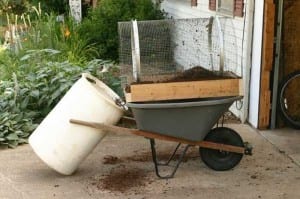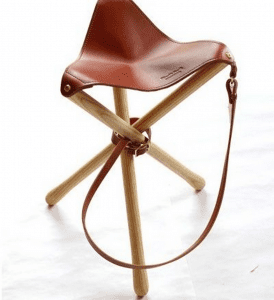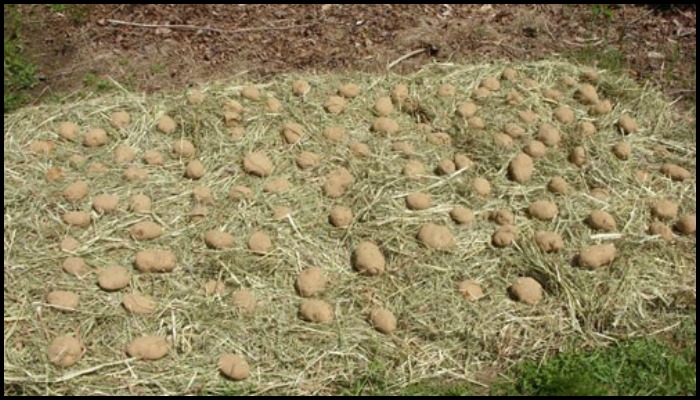
It is difficult to resist the appeal of simple, unconventional gardening concepts. Indeed, who wouldn’t appreciate the concept of cultivating their own sustenance with minimal exertion? Nevertheless, like any worthwhile endeavor, simple gardening concepts nonetheless want a certain amount of exertion to initiate. However, once you have mastered the skill, you will be able to savor the taste of fresh and delectable fruits and veggies with minimal effort. Potatoes are an essential ingredient in any kitchen.
They complement any stews and are delectable when grilled with salt. Cultivating these tubers is a reasonably straightforward endeavor, and they do not want a significant amount of land. You have the option to cultivate them in a container on your patio or balcony. In addition, potatoes that are cultivated at home have an exceptional taste! If you have a desire to cultivate your own potatoes, it would be advantageous to contemplate cultivating them within hay bales.
If you desire a method to cultivate potatoes without the use of chemicals, allowing you to have potatoes that are as fresh as desired, it is worth considering the option of growing potatoes in hay bales. This procedure is uncomplicated and effective, enabling you to gather your potatoes promptly upon their ripening. Additionally, cultivating potatoes in hay bales is an excellent method for repurposing unwanted resources.
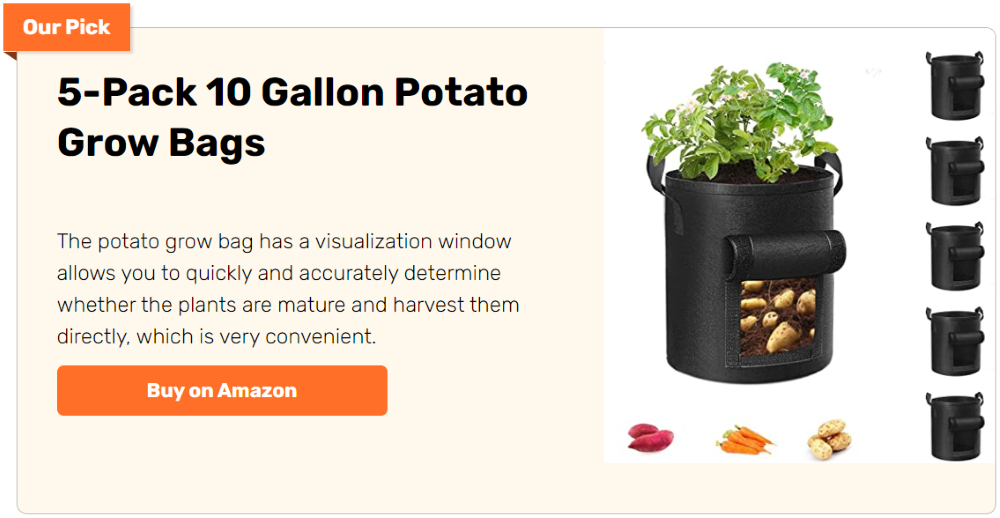
One of the advantages of cultivating potatoes in hay bales is that it necessitates minimal conventional gardening infrastructure. It does not require a designated garden area, fertile soil, ample space, or even tools such as a hoe or tiller. If you possess the following items, you are adequately equipped to commence cultivating your own potatoes using hay bales.
Cultivating potatoes among hay bales is a simple, enjoyable, and efficient method to achieve a plentiful yield. Ensure to remain vigilant for mice at the arrival of autumn. Although they are not troublesome in the summer, they have a fondness for hay during the colder seasons when they seek a warm and snug shelter. The recipients will particularly appreciate the fact that you have offered them both lodging and three daily meals, provided that you do not gather your potatoes in hay bales prior to the arrival of cold weather. However, by implementing basic preventive measures, you can guarantee a plentiful potato yield without encountering any unexpected encounters with rodents!
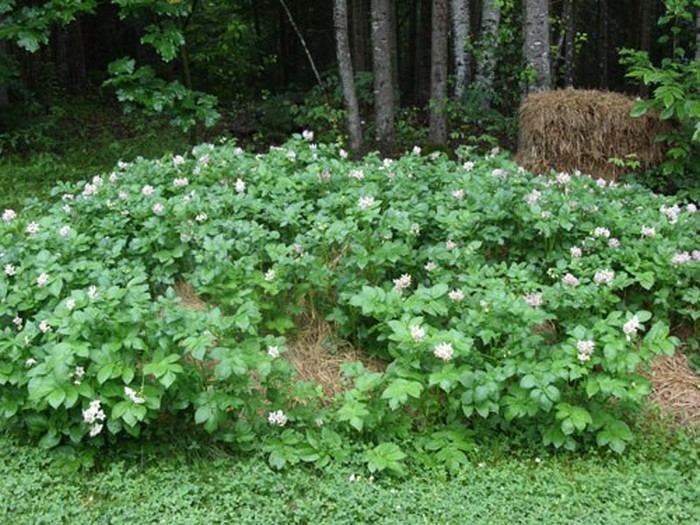
BTW, if you liked this post and are really interested in straw/hay bale gardening, we also have a complete guide and tutorial for planting various produce.
Contents
Growing Potatoes in Hay Bales
Materials
- Gardening Gloves
- Hay Bale
- Seed Potatoes
- Organic Potato Fertilizer
Instructions
Step 1: Gather Your Materials
Before you begin, make sure you have everything you need:
- Gardening Gloves: Protect your hands during the process.
- Hay Bale: Choose a well-bound, dry hay bale.
- Seed Potatoes: Obtain certified seed potatoes for best results.
- Organic Potato Fertilizer: This will help nourish your growing potatoes.
Step 2: Prepare the Hay Bale
- Position the Bale: Place your hay bale in a location that receives at least six hours of sunlight per day.
- Condition the Bale: About two weeks before planting, start conditioning your bale. Soak it thoroughly with water and apply a balanced organic potato fertilizer to kickstart the decomposition process inside the bale.
Step 3: Plant Your Potatoes
- Cut Seed Potatoes: If your seed potatoes are large, cut them into pieces, each with at least one or two eyes.
- Cure the Potatoes: Allow the cut pieces to dry for a couple of days to form a callus over the cuts, which helps prevent rot.
- Planting: Wearing your gardening gloves, make holes about 6-8 inches deep in the top of the hay bale. Plant the seed potatoes with the eyes facing upward, spacing them about 12 inches apart.
Step 4: Care for Your Potatoes
- Watering: Keep the bale consistently moist, especially during dry spells. Potatoes need a lot of water to grow, but avoid over-saturating the bale.
- Fertilizing: Continue to apply organic potato fertilizer every few weeks to supply nutrients to the growing plants.
Step 5: Monitor and Maintain
- Watch for Pests: Regularly check your plants for signs of pests or diseases. Treat with organic methods if necessary.
- Add More Hay: As the potato plants grow, you may need to add more hay around the stems to support them and cover the growing tubers to prevent them from getting sunburned.
Step 6: Harvest Your Potatoes
- Timing: Potatoes are usually ready to harvest when the foliage begins to die back and yellow. This typically occurs about 10 weeks after planting.
- Harvesting: Wearing your gloves, gently pull apart the hay bale to reveal the potatoes. Collect them and brush off any excess hay.
Step 7: Enjoy Your Crop
- Storage: Store your harvested potatoes in a cool, dark place to prolong their shelf life.
- Cooking: Enjoy your home-grown potatoes in a variety of dishes, appreciating the fresh, organic produce you cultivated yourself.
Click on any image to start the lightbox display. Use your Esc key to close the lightbox.![]()
Cover the potatoes with more hay, and water them regularly.
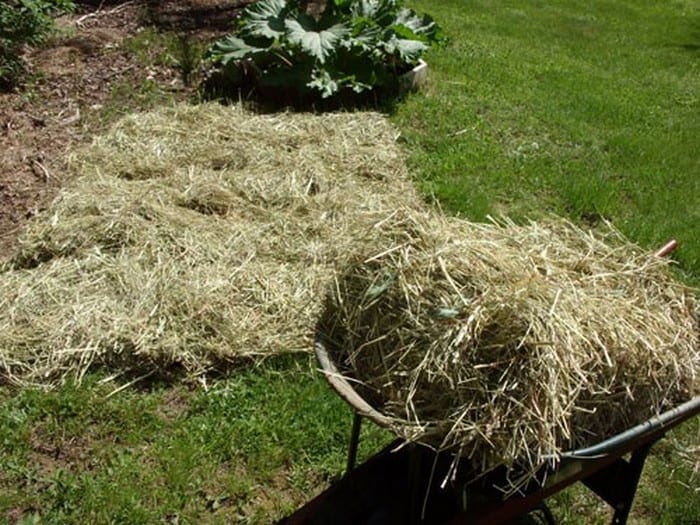
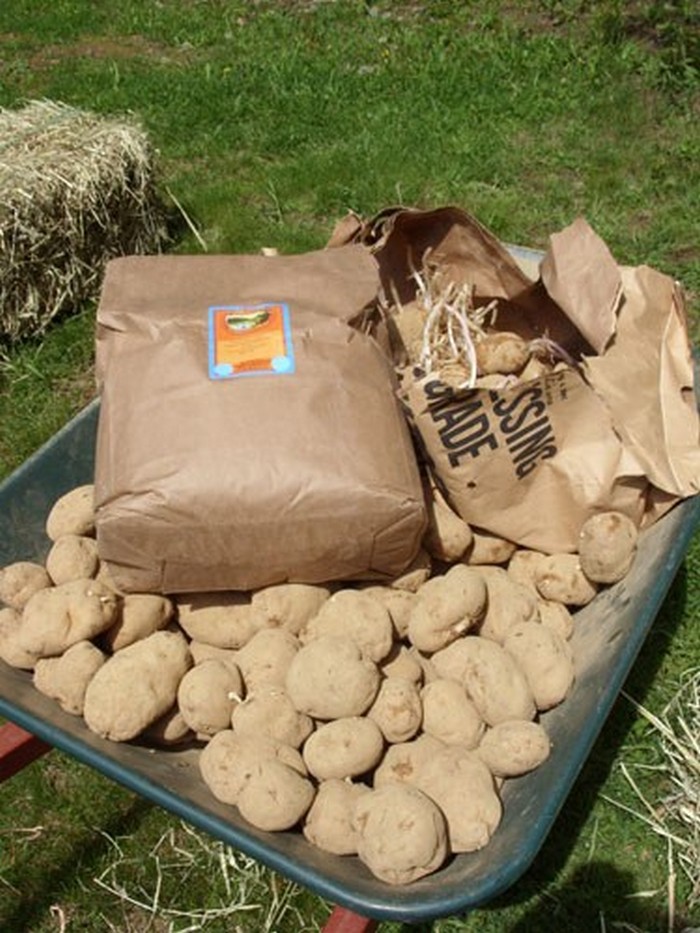
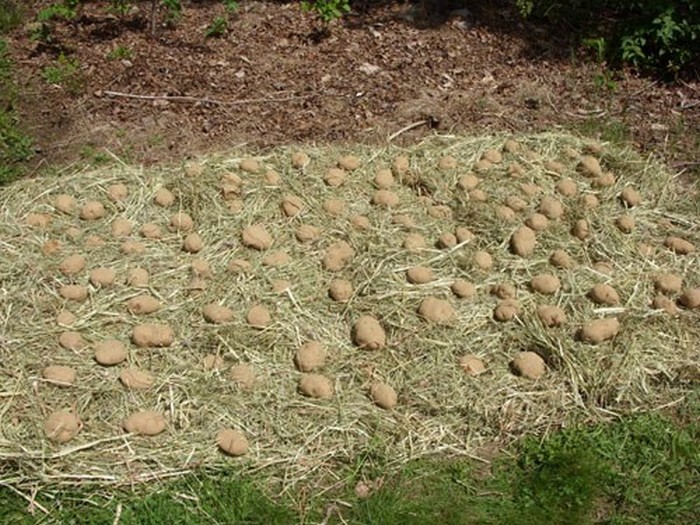
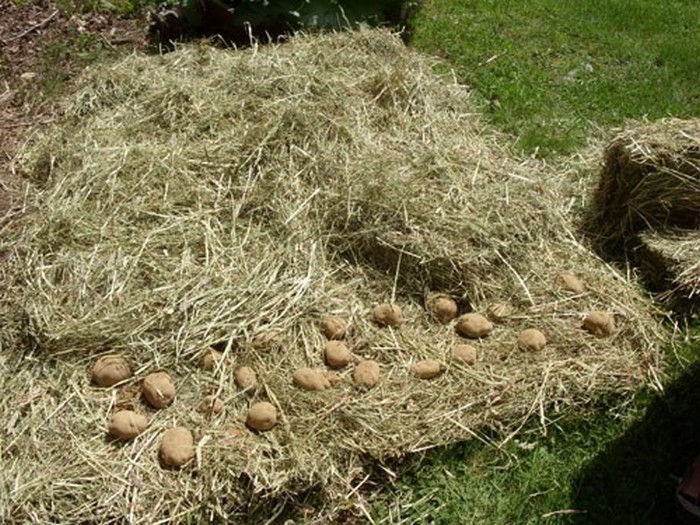

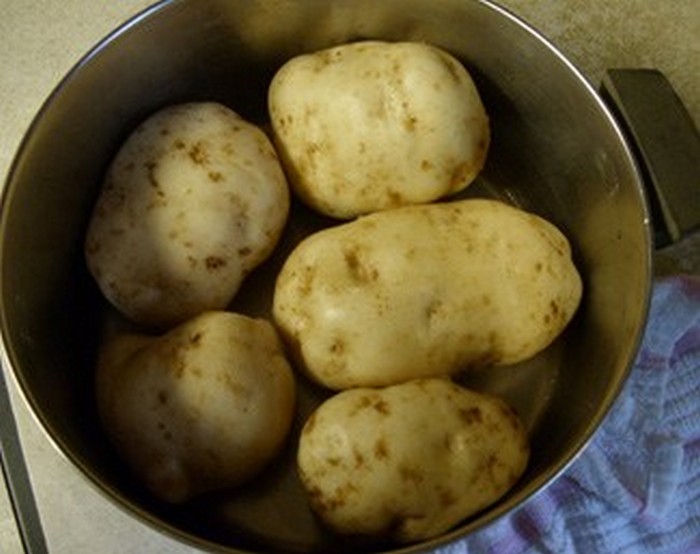

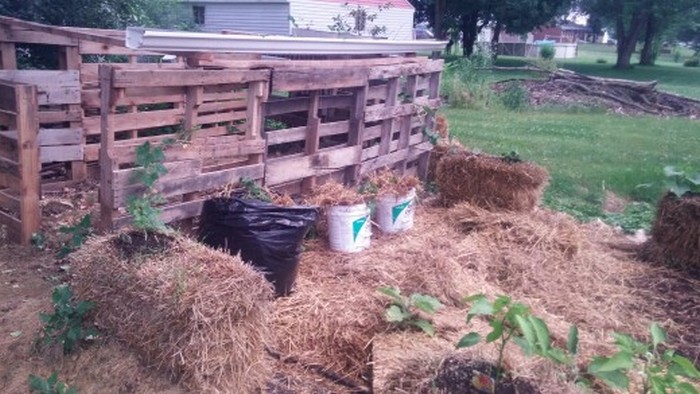
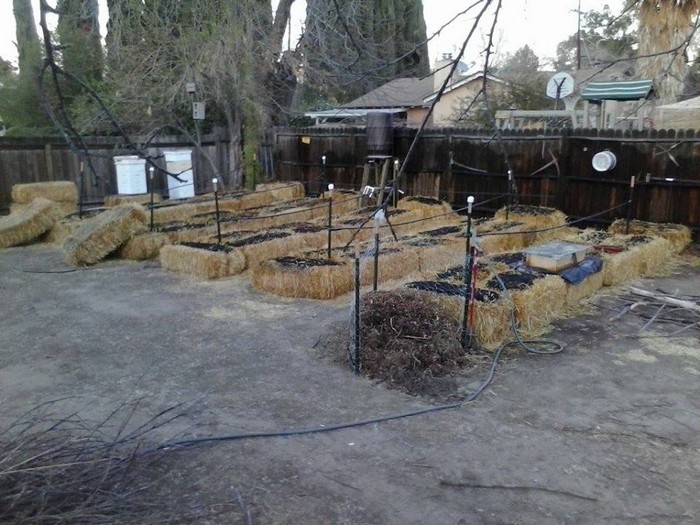
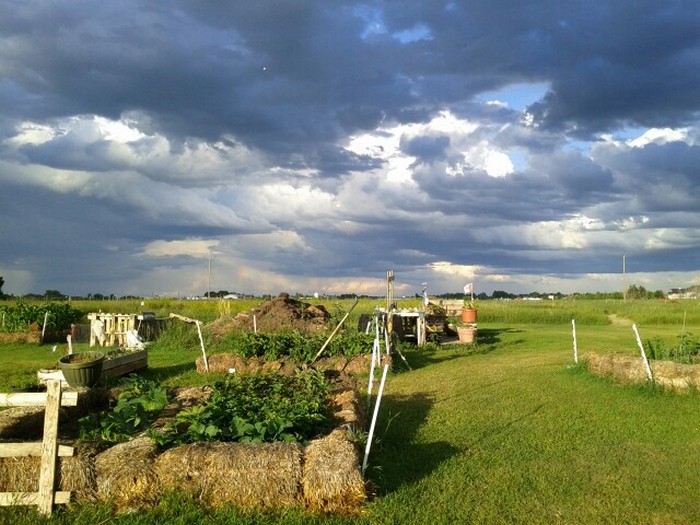
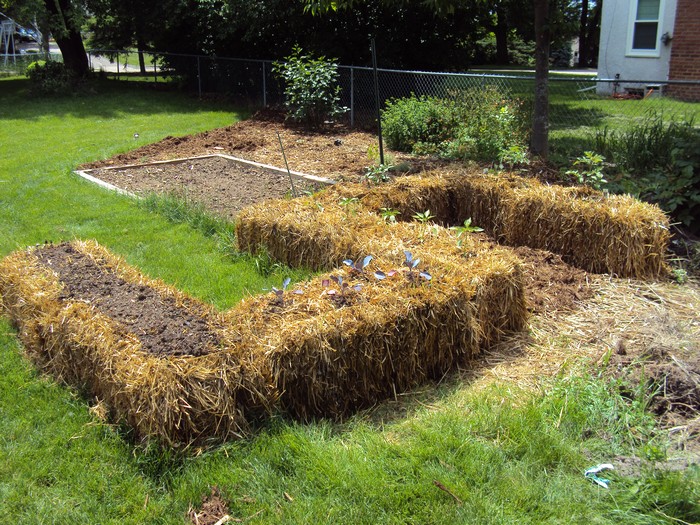
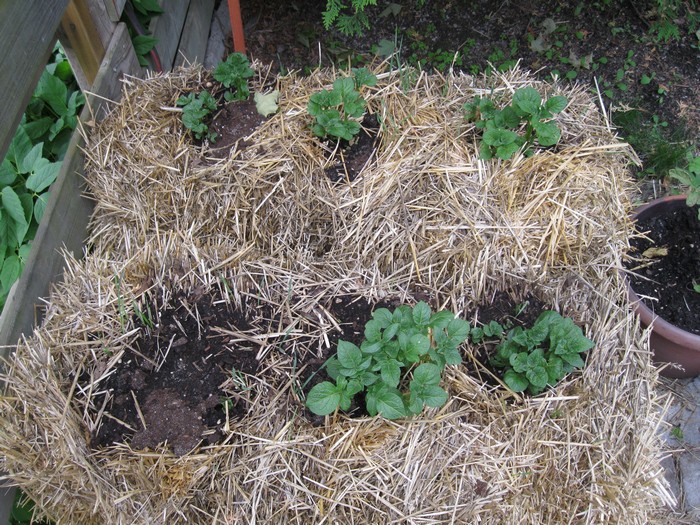
Grow your own root vegetables at home with these Root Vegetable Grow Bags!
Benefits of Growing Potatoes in Hay Bales
Growing potatoes in hay bales is an innovative gardening method that offers numerous advantages. This approach is not only space-efficient but also minimizes the common hurdles faced in traditional gardening.
Here’s why you might consider growing your potatoes in hay bales:
Easy Setup and Management
One of the primary benefits of growing potatoes in hay bales is the ease of setup. Unlike conventional gardens that require tilling and soil preparation, hay bales simply need to be positioned and conditioned. This makes it ideal for gardeners who want to avoid the labor-intensive process of soil preparation. Potatoes in hay bales thrive with minimal fuss, requiring just basic watering and occasional fertilizing.
Improved Drainage and Aeration
Potatoes in hay bales benefit from excellent drainage and aeration. Since the bales are inherently loose, air can circulate freely around the potatoes, reducing the risk of moisture-related diseases. This setup prevents the waterlogging issues often seen in clay or poorly draining soils, ensuring your potatoes remain healthy throughout their growth.
Reduced Soil-Borne Diseases
Growing potatoes in hay bales significantly reduces the exposure to soil-borne diseases. Traditional soil gardens can harbor pests and pathogens that affect potato health and yield. By using hay bales, you isolate your crop from the ground, lessening the likelihood of disease transmission. This clean environment helps in producing healthier and more robust potatoes.
No Need for Chemicals
Potatoes grown in hay bales can be cultivated without the use of chemical fertilizers or pesticides. The natural composition of hay provides a barrier against many common pests, and you can enrich your bales with organic compost to nourish your potatoes. This method supports a more sustainable and eco-friendly approach to gardening.
Convenience and Accessibility
For those with limited space or physical limitations, growing potatoes in hay bales is a practical solution. You can place hay bales on any flat surface, such as patios, driveways, or rooftops, making gardening accessible to everyone. This method reduces the need for bending or kneeling, providing a comfortable and convenient gardening experience.
Easy Harvest
Harvesting potatoes from hay bales is remarkably straightforward. Instead of digging through the soil, you can simply pull apart the bale to access the potatoes. This not only makes the harvesting process easier but also reduces the damage to the potatoes, ensuring they come out clean and unbruised.
Resourceful Use of Materials
Finally, growing potatoes in hay bales is an excellent way to utilize materials that might otherwise be discarded. This method promotes recycling and waste reduction, turning a simple hay bale into a productive and fruitful garden space.
Growing potatoes in hay bales offers a unique blend of convenience, efficiency, and sustainability. Whether you’re a seasoned gardener or a beginner, this method could revolutionize how you grow your potatoes and enjoy the fruits of your labor with minimal effort.
Seasonal Care Tips for Potatoes in Hay Bales
Caring for potatoes in hay bales requires attention to seasonal changes to ensure a healthy crop year-round. Each season brings its own set of challenges and opportunities for your hay bale garden.
Here’s how you can adapt your care routine to the changing seasons:
Spring: Planting and Early Growth
- Prepare Your Bales: Begin by conditioning your hay bales two weeks before planting. This involves soaking them with water and applying a nitrogen-rich fertilizer to start the decomposition process, which warms up the bale and makes it a suitable growing environment.
- Planting: Once your bales are ready, plant your sprouted seed potatoes deep into the bales. Make sure they are well-spaced to give each plant enough room to grow.
- Watering: Regular watering is crucial as the weather warms up. Keep the bales consistently moist, but not waterlogged, to encourage strong sprout development.
Summer: Growth and Maintenance
- Feeding: Apply a balanced liquid fertilizer every two weeks to support the growing plants. This will provide the necessary nutrients for your potatoes to develop healthily.
- Pest Control: Monitor for signs of pests and diseases. Use organic pesticides if necessary, or employ natural methods like introducing beneficial insects or using barriers to protect your plants.
- Mulching: Adding a layer of straw or additional hay on top of the bales can help retain moisture during the hotter months and keep the roots cool.
Fall: Monitoring and Harvest
- Water Management: Reduce watering as the season progresses and the plants mature. Allow the surface to dry out slightly between waterings to prevent rot.
- Harvest Time: Once the foliage begins to yellow and die back, it’s time to start checking for readiness. You can harvest by simply pulling the bale apart and collecting your potatoes.
- Preparation for Winter: After harvesting, you can repurpose the used hay as mulch or compost it for next season’s gardening.
Winter: Rest and Preparation
- Protecting Remaining Bales: If you have unused hay bales, cover them with a tarp to protect them from excessive moisture and make them last through the winter.
- Planning for Next Year: Winter is a great time to reflect on the past season’s successes and challenges and plan for the next year. Order seed potatoes early and gather supplies for conditioning new bales.
By following these seasonal care tips, you can maximize the productivity of your hay bale garden and enjoy a bountiful harvest of potatoes each year. Whether you’re a beginner or a seasoned gardener, these strategies will help ensure your garden thrives in all conditions.
Conclusion
Growing potatoes in hay bales is a versatile and efficient method that simplifies many aspects of traditional gardening. This approach not only reduces the risk of soil-borne diseases but also makes harvesting a breeze. With a bit of seasonal care, even novice gardeners can enjoy a plentiful yield of fresh, delicious potatoes.

